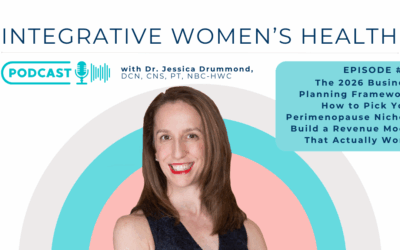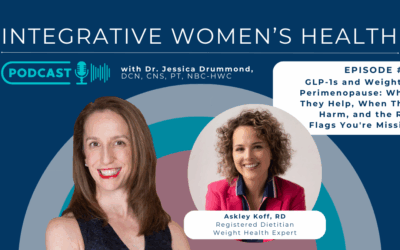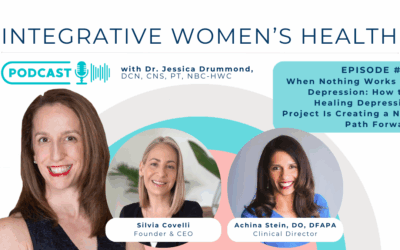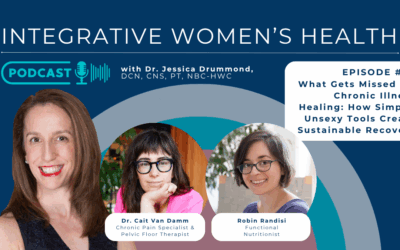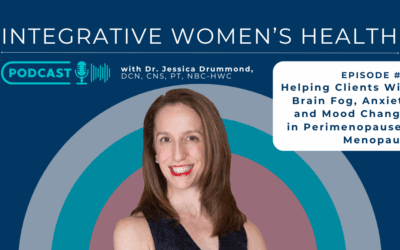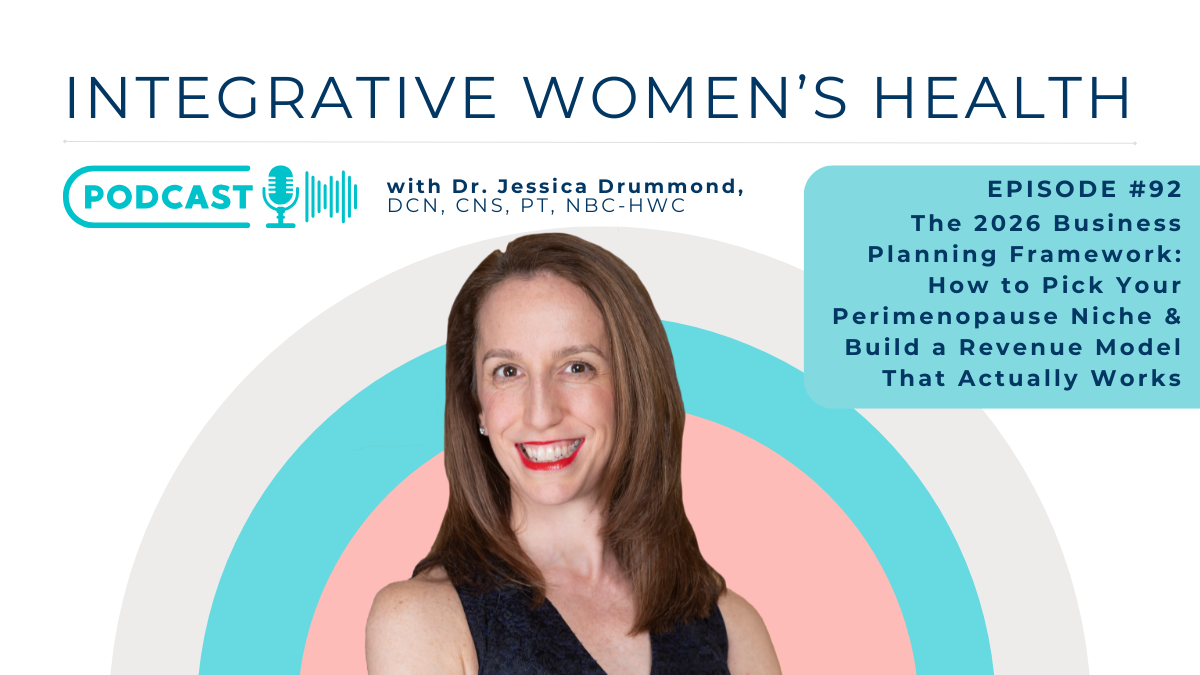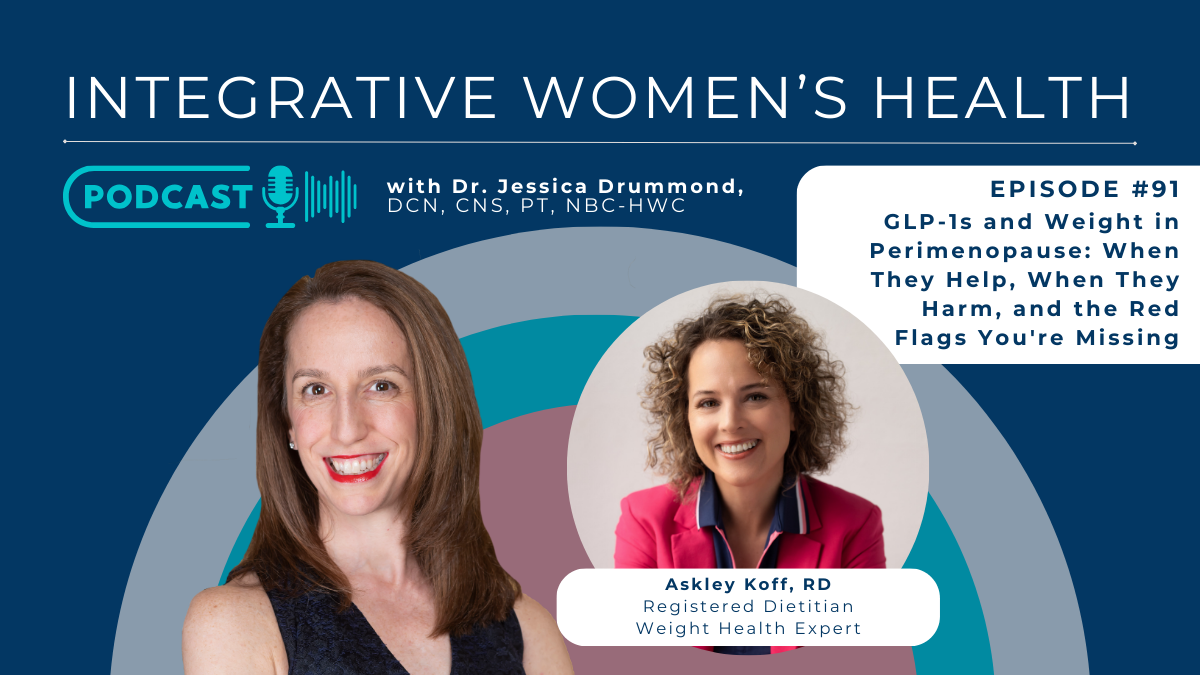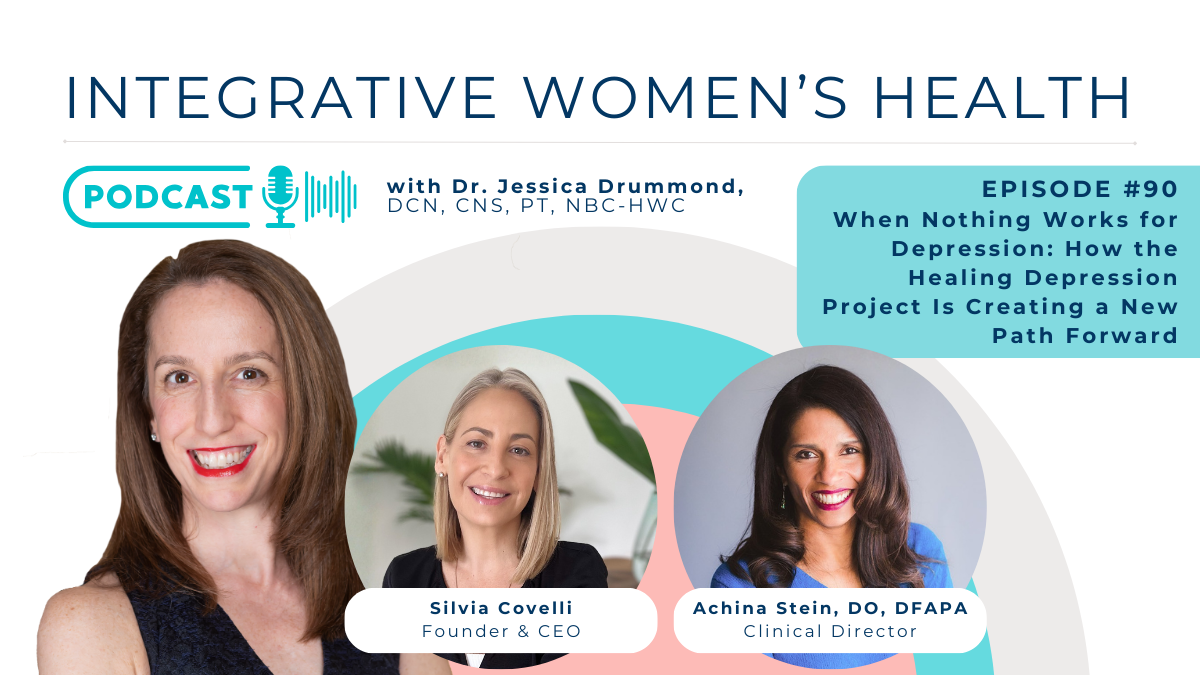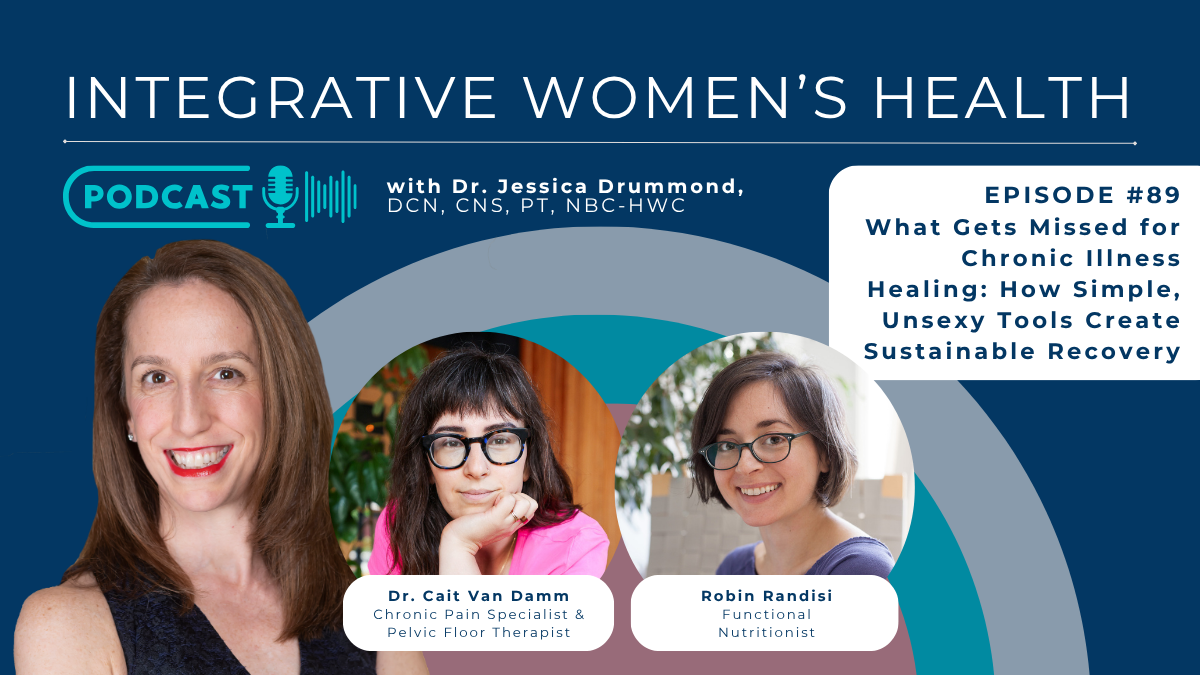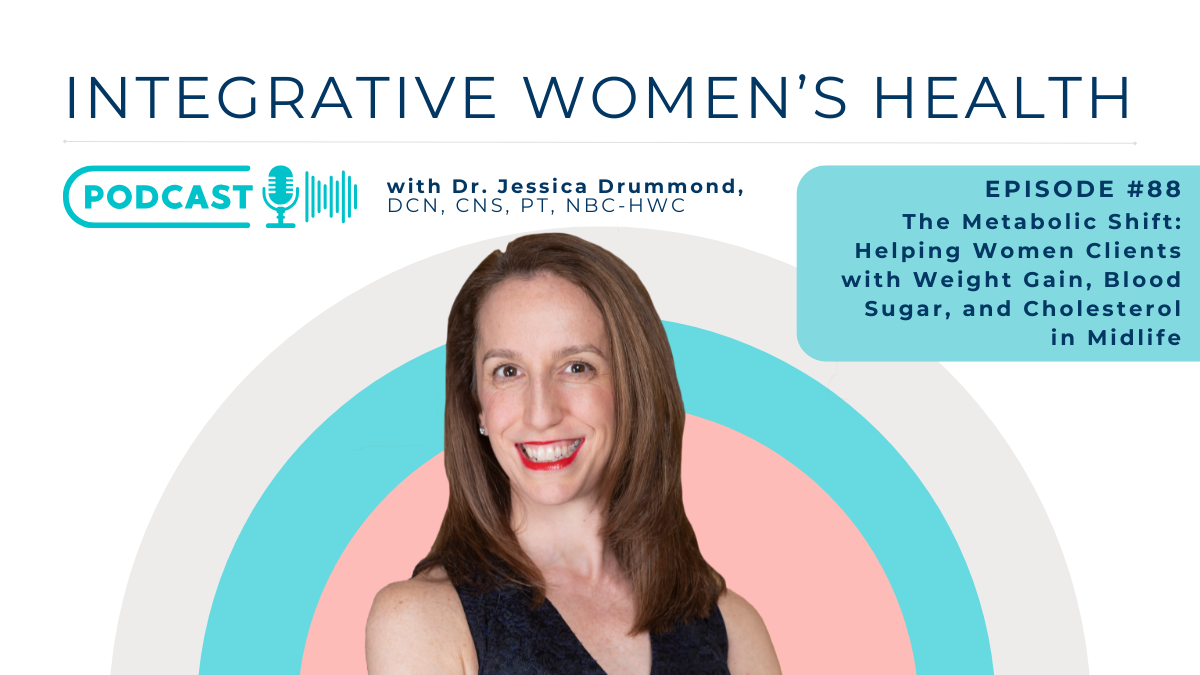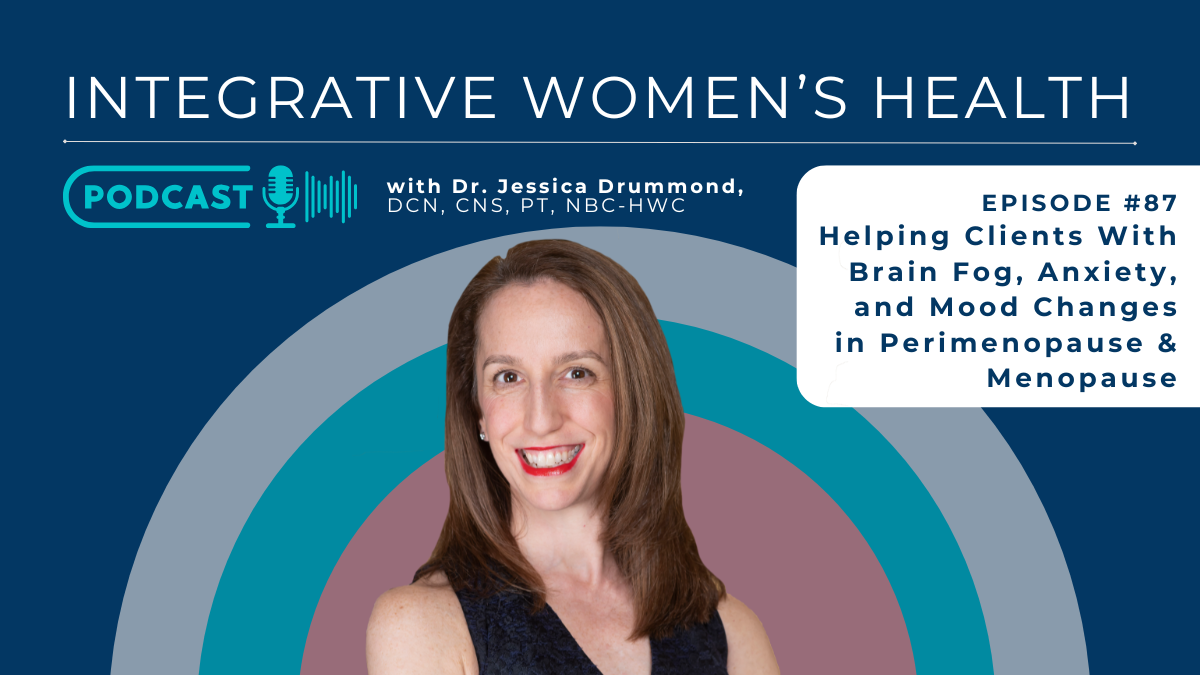Part 3: Recovery Strategies for Long Covid
7-Steps for Long Covid Relief and Recovery
Our approach to Long Covid Recovery is strongly evidence based on research and clinical experience and my personal lived experience of living with Long Covid since December of 2020.
We take a highly holistic approach to healing for all of our clients with chronic illness. First and foremost we listen to, learn from, and center our clients. Their lived experience is essential to hear, collaborate with, and guide research efforts. Our clients know more about Long Covid and other chronic illnesses than most of their providers. The gaslighting ends here. Our clients are educated, smart, and read the data on their illnesses. They want to heal, and we are here to support them.

How we help our clients to heal and recover from Long Covid.
Using the IWHI 7-Step System for Chronic Illness Healing, we always begin by addressing the client’s foundational nervous system regulation.
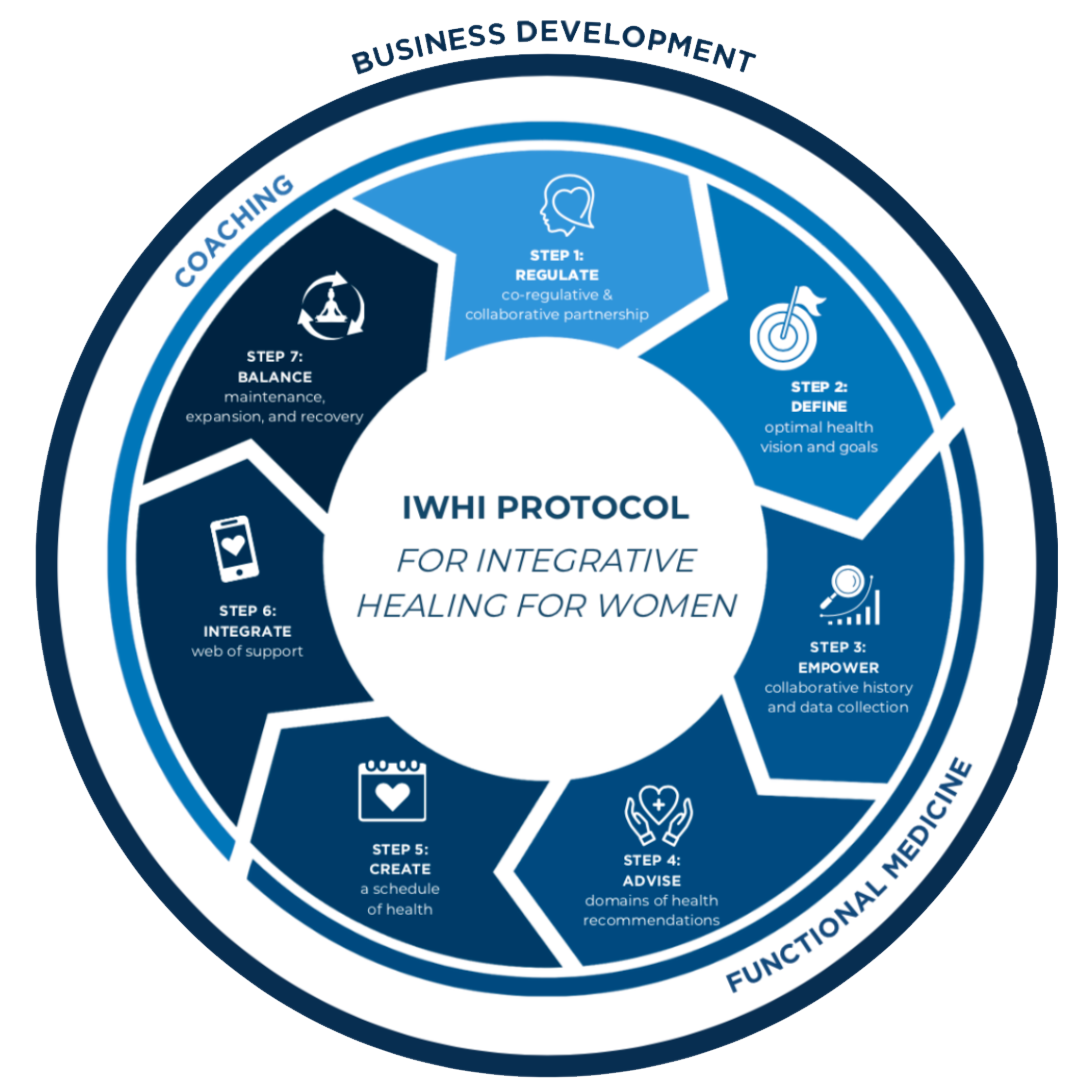
Step 1: Nervous System Regulation
How nervous system regulation is essential for healing long covid, and other complex chronic illnesses.
When the nervous system is under stress and either activates the sympathetic fight or flight state or the parasympathetic freeze state, it activates a chronic inflammatory state in the body.
This chronic inflammation will promote digestive symptoms, inflammatory symptoms, neuroinflammatory symptoms (such as mood changes, brain fog, or other cognitive impairments), immune suppression, autoimmunity, and endocrine (hormone) disruption.
When this chronic overactivity and poor coordination of the immune system is activated by chronic nervous system stress the client will experience symptoms such as digestive issues, pain, fatigue, and inflammatory damage to organs, the vascular system, mast cell activation syndrome (and other histamine issues), menstrual irregularities, difficulty fighting infections, fertility challenges, early menopause, and more.
What strategies do we have to support healing of the autonomic nervous system response and vagus nerve tone for optimizing long covid recovery and symptom management?
Use of Auricular Vagal Neuromodulation Therapy (AVNT)
A recent pilot study assessed the efficacy of transcutaneous vagus nerve stimulation (t-VNS) in 24 female Long COVID patients (45.8 ± 11.7 years old; 20.2 ± 7.1 months since infection), who underwent a 10-day auricular vagal neuromodulation therapy (AVNT) intervention at home (30 min/session, twice a day).
Outcomes were measured at baseline, post-intervention, and 1-month follow-up. Significant improvements were observed in various cognitive functions, anxiety, depression, and sleep at post-intervention, with benefits remaining or progressing at 1-month follow-up.
Improvements in fatigue were delayed, reaching statistical significance at 1-month follow-up compared to baseline. No significant changes were noted in olfactory performance.
Dolphin Vagal Nerve Stimulator (also called Dolphin Neurostim) has been authorized by Health Canada to support symptom management for people with Long Covid.
Breathing Exercises
Breathing exercises combined with creatine supplementation of 4 grams per day has been found to reduce the fatigue associated with Long Covid.
Breathing exercises combined with either functional exercises or aerobic exercise improved the function (functional exercise only) and perceived stress (both forms of exercise) of people with Long Covid, While this result is encouraging, it’s important to remember that for many with Long Covid, exercise can exacerbate the symptoms and potentially the underlying disease causes. Thus, implementation of exercise for people with Long Covid must be done slowly and with care.
Yogic breathing has been found to improve white blood cell count and lower D-dimer levels. Elevated D-dimer levels are a sign of increased risk of thrombosis and venous thromboembolism in patients with COVID-19. Plus, a lower D-dimer level correlates with a reduced risk of vaccine-induced thrombotic thrombocytopenia in vaccinated individuals.
Resources and strategies for autonomic nervous system optimization and vagus nerve toning:
- Suzy Bolt Yoga and Meditation for Long Covid Recovery
- Spending time in nature. While the data on the recovery enhancement of spending time in nature is mixed, notice how it feels for you and decide if it feels helpful or not for your recovery.
- Spending less time using screens.
- Use a transcutaneous vagus nerve stimulator such as The Dolphin Neurostim, Apollo Neurom, Sensate Pebble, etc. For some with Long Covid, these devices exacerbate symptoms, and more gentle strategies such as breathing exercises are more effective. Struggling with Long Covid? Work 1:1 with Dr. Jessica Drummond.
Step 2: Define Your Optimal Health Goals
For all of our clients with complex chronic illnesses, it’s important that we support them to get clear on what health and healing look like for them. Because health and sickness are not absolute black and white experiences.
For example, elite athletes could be injured, have immune suppression, or mental health challenges, and people who are very sick with cancer could have great social and emotional health, good energy on some days, and the ability to contribute to society through work, art, or parenting on other days, there is no clear definition of sickness or health.
We will work with you to clarify your unique health goals.
What does health look like to you? What is your baseline? What would you like to be able to do? What is your level of commitment to the process?
As our clients with Long Covid heal, we remind them that they are stepping on to the “upward spiral of healing” (a concept I learned from Jeffrey Rediger’s book, Cured.) This means that healing is not a linear experience of getting better every day. While there will likely be better and more challenging days, over time, the trend in the direction of healing is probable.
For myself, keeping this image in mind on days where my symptoms were more challenging, especially after a period of “good days,” was helpful.
Struggling with Long Covid? Work 1:1 with Dr. Jessica Drummond.
Steps 3 & 4: Empower and Advise
Because covid is a vascular disease that impacts every organ system of the body. Support of vascular health is key during acute infection.
Strategies to support vascular health:
- Gentle movement. Even if you are only mildly fatigued, limit movement to gentle mobility exercise, walking, swimming, yoga, or other gentle exercise in the acute phase.
- Nourish with beets, beet powder, bok choy, celery juice, leafy greens and leafy green juices, and other high nitrate vegetables to increase levels of vascular nitric oxide.
The 10 Buckets of Long Covid Recovery
1. Viral Persistence
How can we measure viral persistence?
Studies published as early as 2021, demonstrated that viral persistence could be a key factor in the development and chronicity of Long Covid
Is laboratory testing available to determine viral or viral RNA persistence that is clinically relevant?
The short answer is “No.”
A decline in serotonin levels may be linked to covid reservoirs in the gut.
Unfortunately there are not yet any commercially available biomarkers for viral persistence for SARS COV2. But, there are multiple studies pointing to viral persistence or viral RNA persistence contributing to Long Covid.
In a Chinese study published in The Lancet in 2024, the researchers collected 317 tissue samples from 225 patients in early 2023, including 201 residual surgical specimens, 59 gastroscopy samples, and 57 blood component samples.
Viral RNA was detected in 16 (30%) of 53 solid tissue samples collected at 1 month, 38 (27%) of 141 collected at 2 months, and seven (11%) of 66 collected at 4 months. Viral RNA was distributed across ten different types of solid tissues, including liver, kidney, stomach, intestine, brain, blood vessel, lung, breast, skin, and thyroid.
Additionally, subgenomic RNA was detected in 26 (43%) of 61 solid tissue samples tested for subgenomic RNA that also tested positive for viral RNA.
At 2 months after infection, viral RNA was detected in the plasma of three (33%), granulocytes of one (11%), and peripheral blood mononuclear cells of two (22%) of nine patients who were immunocompromised, but in none of these blood compartments in ten patients who were immunocompetent.
Among 213 patients who completed the telephone questionnaire, 72 (34%) reported at least one long COVID symptom, with fatigue (21%, 44 of 213) being the most frequent symptom.
Detection of viral RNA in recovered patients was significantly associated with the development of long COVID symptoms (odds ratio 5·17, 95% CI 2·64–10·13, p<0·0001). Patients with higher virus copy numbers had a higher likelihood of developing long COVID symptoms.
This 2022 and this 2023 review article discuss more about what is known and not yet known about the viral persistence theory of Long Covid.
While we can test for spike protein antibodies in commercially available tests, these have limited usefulness, and simply show whether active antibodies are circulating in acute infection or if someone did mount an antibody response to a prior infection or vaccination.
What are some potential therapeutic options for reducing the viral load?
Trials are currently underway for longer term use of Paxlovid, which may help to promote immune clearance of viral reservoirs. But, that research is not yet conclusive, and the initial studies show safety, but not a clear benefit.
Another 3CL protease inhibitor, Tollovid, has been shown in a case study to improve Long Covid symptoms, and ongoing research is pending for the use of Tollovid for full Long Covid recovery.
2. Immune System Dysfunction
a. Mast Cell Activation Syndrome and other Histamine issues
There is not one clear test to diagnose MCAS, but common symptoms are:
- Skin flushing, itching, hives, rashes, or swelling in varied and multiple locations around the body.
- Gastrointestinal symptoms, such as slow motility, constipation, bloating, diarrhea, nausea or vomiting
- Musculoskeletal, such as painful joins, muscle aches or weakness, osteopenia or osteoporosis, or bone pain.
- Neurologic, such as memory loss, brain fog, headaches, balance problems, dizziness or fainting, or mood disorders.
- Changes in blood pressure, shortness of breath, numbness or tingling, or flu-like symptoms.
Tests to consider for MCAS include:
- IgE-mediated allergy testing by skin prick or RAST testing of a blood sample.
- Blood testing to evaluate tryptase levels (this is best tested during a symptom flare.)
- Biopsies of the skin, bladder, or gut where the presence of high or abnormal mast cell numbers can support the diagnosis of MCAS or mastocytosis.
- The most effective therapies I have seen in our clinical experience for MCAS are: compounded ketotifen (1-3 mg nightly), Cromolyn Sodium, and/or Low Dose Immunotherapy to reduce immune hyperactivity. Nervous system regulation and vagus nerve toning can also reduce immune hyperactivity in people living with Long Covid.
- In our clinic, we take an individualized approach that utilizes pharmaceutical and nutraceutical approaches combined with lifestyle strategies. Some additional benefit can be gained from high quercetin diets or quercetin supplementation, pycnogenol supplementation, intermittent fasting, and longer term fasting.
For women with long covid and MCAS or other histamine issues during the perimenopause to menopause period, addressing the MCAS or histamine issues first may be important before using medical hormone therapies as estrogen can promote mast cell degranulation.
b. T-Cell Suppression, Natural Killer Cell Suppression, Neutrophil Damage, and Antibodies
The best tests to assess immune cellular function are:
- Amerimmune COVID Phenotyping Assay Test Results, to determine T and B cell caspase-1, T, B, and NK cell levels, and B cell memory.
- A basic CBC can also show changes in levels of white blood cells, neutrophils, and other specific white blood cells that can be suppressed by Long Covid.
To strengthen immune function, the following strategies may be helpful:
- Very low carbohydrate diet
- Fresh vegetable juices (which also add beneficial PQQ), such as fresh pressed greens, cucumber, celery, ginger, apple, and more.
- Medicinal mushrooms and their compounds such as beta-glucans.
- Green tea
- We often use a combination product in our practice, such as Transfer Factor Multi-Immune.
C. Chronic Inflammation
Common tests for chronic inflammation include:
- C-reactive protein (CRP) or high-sensitivity C-reactive protein (hs-CRP)
- Erythrocyte sedimentation rate (ESR)
- Plasma viscosity
- Fibrinogen
- White blood cell count
- Interleukin-6 (IL-6)
- Homocysteine
Depending on the client’s stress levels, sleep quality, nutrition plan, exercise tolerance, social health, etc., we devise personalized protocols for an anti-inflammatory lifestyle.
Plant based diets (or sometimes carnivore diets often of limited duration), enjoyable time with friends, consistent sleep quality, time spent in nature, and more can contribute to a personalized protocol.
Additionally, a personalized protocol of nutraceuticals, nutrition, and lifestyle can be additive to reduce chronic inflammation associated with Long Covid and the client’s preexisting conditions or comorbidities.
D. Reactivation of Other Chronic Infections
In a systematic review of viral reactivations and coinfections in patients with Covid-19, published in April of 2023, EBV, HHV-1, and CMV were most frequently observed within the reactivation cohort, whereas IAV and EBV within the coinfection cohort. In both reactivation and coinfection groups, patients reported cardiovascular disease, diabetes, and immunosuppression as comorbidities, acute kidney injury as complication, and lymphopenia and elevated D-dimer and CRP levels from blood tests.
Infectolab’s Long Haul Viral panel utilizes Elispot T-cell testing to identify reactivation of chronic viruses, such as EBV and CMV and quantifies 3 key pro-inflammatory cytokines, plus serum cortisol. These three proinflammatory cytokines (IL-1β, IL-6, TNF-α) have been shown to be elevated in Long Covid.
Complete EBV viral antibody testing to differentiate between a history of EBV vs. reactivated EBV, can also be accessed here.
If there is a chronic reactivation of another infection, such as EBV, we will implement strategies to address the specific chronic viral or bacterial infection, such as monolaurin, l-lysine, and other effective nutraceuticals and/or pharmaceuticals.
3. Mitochondrial Dysfunction
The best test for mitochondrial dysfunction is the Mitoswab Plus.
If mitochondrial dysfunction is at issue, supporting mitochondrial activation and recovery can reduce the harmful effects (and Post Exertional Symptom Exacerbation) of the possible hypoxia–reperfusion issues associated with Long Covid.
To support enhancing mitochondrial function, the following may be helpful, and some of these may be recommended for an individual client’s personalized protocol:
- Pacing
- CoQ10
- Ubiquinone
- NMN
- NAC and/or glutathione
- Riboflavin and thiamine
- Urolithin A
- V-nella probiotic
- Red Light: 850nm near infrared light
- Vitamin C
- Arginine Phytosome
- Oxaloacetate
- Chrysin
- D-ribose
To support post-exertion (physical activity, cognitive, or emotional activity) recovery, the following may be helpful, and some of these options may be recommended for an individual client’s personalized protocol:
- 650 nm Red Light
- PQQ: 20-40mg at the end of the exertion or the end of the day
- Hydrogen Water, such as these tablets.
- Chinese herbal extract called She Chuang Zi (Cnidium fruit, available as a liquid from Hawaii Pharm)
4. Dysautonomia
While there is no “best” suite of tests for dysautonomia, if you struggle with temperature regulation, difficulty with activities or exercise in standing, hot flashes, blood pressure stability, becoming dehydrated easily, dizziness, or fainting, this should be a part of the differential diagnosis with your medical team.
Strategies to improve dysautonomia:
- Morning and afternoon salt water (such as LMNT, Jigsaw adrenal cocktail, or sea salt)
- Swimming
- Reformer pilates
- Stationary cycling
- Rowing
- Blood pressure medications, transdermal estrogen may be helpful for perimenopausal or menopausal women with Long Covid and elevated blood pressure.
- Stellate ganglion block
- β-blockers
- Pyridostigmine
- Fludrocortisone
- Midodrine
- Compression stockings and other compressive clothing
- Saline IV’s.
Also, it’s key to address the causes of dysautonomia, which often includes addressing MCAS and other immune challenges. When we look closely at the symptoms of Long Covid, viral persistence and immune dysfunction are often at the root.
5. Digestive Function and Gut Microbiome Dysbiosis
A key aspect of immune health is the health of the digestive system and gut microbiome.
About 70% of immune function resides in and around the digestive system, Determining the optimal composition of the gut microbiome is challenging, but there are a few studies and insights that can give us clues to beneficial therapies for digestive and gut microbiome health for people with Long Coviud and other chronic illnesses.
First of all, how is the digestive system functioning?
- Are you eating mindfully without distractions?
- Are you chewing 20-40 times per bite? This rate is the optimal chewing frequency in the research which is important for preparing the food for digestion. As I always tell my clients, “Your stomach does not have teeth. Slow down and chew thoroughly,”
- Are there adequate digestive juices? For some clients adding digestive enzymes, betaine HCL, and bile support supplements can improve the breakdown and digestion of foods in the stomach and proximal small intestine. We use digestive function tests, such as The GI MAP and Urinary Organic Acids testing to determine the health of these aspects of digestion.
- How healthy is the lining of the small intestine? We can also test for increased intestinal permeability, which allows us to see how well the digestive system barrier is protecting the immune system from exposure to excessive challenges, and how well our clients are able to absorb nutrients from the foods they are eating.
- How healthy is the composition of the gut microbiome? While there are no perfect tests for this, functional tests such as The GI MAP and others can give us general information about gut dysbiosis, yeast or fungal overgrowth in the gut and more.
- Are you struggling with any digestive symptoms, such as reflux, bloating, nausea, or pain?
- Are you having Bristol 4 bowel movements, 1-3 times daily?
Among people who have recovered from acute covid, there are stark differences in gut microbiome composition between those who have fully recovered and those who go on to experience Long Covid.
In a 2023 study conducted in China, “Compared with healthy controls (HCs), symptomatic recovered patients had obvious gut microbiota dysbiosis including significantly reduced bacterial diversities and lower relative abundance of short-chain fatty acids (SCFAs)-producing salutary symbionts such as Eubacterium_hallii_group, Subdoligranulum, Ruminococcus, Dorea, Coprococcus, and Eubacterium_ventriosum_group.”
Meanwhile, the relative abundance of Eubacterium_hallii_group, Subdoligranulum, and Ruminococcus showed decreasing tendencies between HCs, the asymptomatic group, and the symptomatic group.
In hospitalized acute covid patients, “Opportunistic pathogens were overrepresented and beneficial commensals were underrepresented in COVID-19 patients at time of hospitalization and at all timepoints during hospitalization. Gut dysbiosis persisted even after the clearance of SARS-CoV-2 and the resolution of the respiratory symptoms. While the abundance of Coprobacillus, Clostridium ramosum, and Clostridium hathewayi correlated with COVID-19 severity, the correlation between the abundance of Faecalibacterium prausnitzii (an anti-inflammatory bacterium) and disease severity was inverse.”
In a 2022 study looking at patients who did and did not fully recover from Long Covid, “Gut microbiota composition at admission was associated with the occurrence of long COVID. The gut microbiota of COVID-19 patients who did not develop long COVID was totally recovered and indistinguishable from that of uninfected controls at 6 months.
Patients who developed long COVID presented significant compositional alterations of gut microbiota at the same time after infection.
Their analyses revealed significant correlations between the abundance of certain bacterial taxa and the presence of some of the most characteristic symptoms of long COVID, such as the high abundance of nosocomial gut pathogens, including Clostridium innocuum, in patients with fatigue and neuropsychiatric symptoms, or the high abundance of opportunistic gut pathogens in patients with persistent respiratory symptoms.
Clearly healthy gut microbiome recovery post-acute covid is key to recovery. But, exactly which microbiome supportive therapies are most effective have not yet been elucidated in the research.
We have found most clinically beneficial depends on the client, but a few options include:
- Increasing prebiotic plants in the diet and/or using prebiotic supplements such as MegaPre or Inulin.
- Probiotics including spore based probiotics such as Tundrex, MegaSpore or BiomeUltra
- Lactobacillus species
- Bifidobacterium species
- Probiota HistaminX for those highly sensitive with MCAS or histamine issues
- Veillonella which may to persist in some with Long Covid, but may support improvements in energy production due to its ability to use lactate as an energy source, which may be overproduced in those with energy metabolism symptoms of Long Covid.
- Oral Streptococcus salivarius (Blis K12) supplementation enhanced salivary anti-Spike antibodies in vaccinated individuals. Altogether, these data show that distinct species of the human microbiota can express molecular mimics of SARS-CoV-2 Spike protein, potentially enhancing protective immunity.
6. Organ Damage
While there is no singular test for organ damage post-covid. Your healthcare team should consider organ damage if symptoms persist past the acute phase of the infection (approximately 14 days.)
In a 1-year prospective, longitudinal cohort study published in March of 2023, a total of 536 individuals (mean age 45 years, 73% female, 89% white, 32% healthcare workers, 13% acute COVID-19 hospitalization) completed baseline assessment (median: 6 months post COVID-19); 331 (62%) with organ impairment or incidental findings had follow-up, with reduced symptom burden from baseline (median number of symptoms 10 and 3, at 6 and 12 months, respectively).
Extreme breathlessness (38% and 30%), cognitive dysfunction (48% and 38%) and poor health-related quality of life (EQ-5D-5L < 0.7; 57% and 45%) were common at 6 and 12 months, and associated with female gender, younger age and single-organ impairment. Single- and multi-organ impairment were present in 69% and 23% at baseline, persisting in 59% and 27% at follow-up, respectively.
7. Myofascial Damage
a. Muscle and Tendon Injury
Even highly skilled male soccer players have increased injuries of the muscles and tendons post-covid. In another study that assessed post-covid musculoskeletal injury, “Two hundred fifty participants with a mean age of 50.2 years (SD: 17.2) were included. One hundred nine (43.6%) were women; 84 (34%) developed severe disease. Median creatine kinase levels were 91 IU/L (IQR 56-181). Patients with weakness on the Manual Muscle Test-8 (n = 247, 98.8%) and disability on the Health Assessment Questionnaire (n = 107; 42.8%) were common. Neck flexor muscles were prominently affected. Skeletal muscle injury was seen in 22.4%” (95% CI: 17.4-28.1).
Also, “…at least two long COVID symptoms – brain fog and muscle pain – at 90+ days from acute COVID-19 onset are specifically associated with prolonged time to clearance of SARS-CoV-2 RNA from the upper respiratory tract during acute COVID-19. This finding provides evidence that delayed immune clearance of SARS-CoV-2 antigen or greater amount or duration of viral antigen burden in the upper respiratory tract during acute COVID-19 are directly linked to long COVID. This work suggests that host-pathogen interactions during the first few weeks after acute COVID-19 onset have an impact on long COVID risk months later.”
A variety of mechanisms may be at play for why muscles are damaged during and after acute covid infection from immobility to inflammation to impaired protein metabolism and more.
Multiple studies have found an association between myofascial pain issues in long covid and underlying hypermobility syndromes.
It also may be true that muscle fatigue recovery may be more due to adaptation than a true return to baseline function.
Clinically we have found that as our clients heal their inflammation, improve metabolic function, mitochondrial function, and MCAS/ dysautonomia, they can slowly return to exercise. The most beneficial exercise protocols we have seen in this population are:
- Swimming
- Pilates
- Walking when tolerated
- Slow return to strength training. Strength training exercises should start in closed chain to protect hypermobile joints.
- Any exercise that brings the clients joy, such as dancing or rock climbing.
A focus on recovery is key and using wearable technology can also help clients maintain adequate recovery through mitochondrial support, anti-inflammatory strategies, rest, relaxation, sleep, and hydration.
During and/or post exercise recovery, I recommend supportive nutrition including water, electrolytes, creatine (and possibly glucose), amino acids, and greens and reds powders.
8. Vascular Injury and Microclotting
The best test to determine if microclotting is an issue, is done in the US by Dr. Vaughn here. Dr Resia Pretorius has pioneered the research in this area.
Even with high scores on microclot testing due to endothelial casts, these may not have any clinical significance. Controlled trials are currently in progress at Yale and Mount Sanai, and it seems as if these tests are only clinically useful if they show increased platelet activation.
Pharmaceutical anticoagulation therapies, aspirin, and proteolytic enzymes, such as nattokinase and lumbrokinase may be beneficial to address micro clotting and platelet activation.
9. Nervous System Damage
- Neuroinflammation
Neuroinflammation is a common feature of Long Covid. PET scans are now showing a key connection between continuing post covid neuroinflammation and declines in vascular health. It is common in Long Covid to display cognitive challenges such as brain fog or memory loss, or mood dysfunction.
The pain of Long Covid may also in some cases be related to small fiber neuropathy.
As the vascular challenges of long covid are related to neuroinflammation, tools that support overall anti-inflammatory health, vascular health, and brain health, such as a high polyphenol diet, reds or greens powders, quercetin, antioxidant support (such as vitamin C), and more can be useful for recovery.
Some supplements that we have found clinically useful include:
- Neuroflam
- Vedicinals
- Inflammatone
- SPM Mediators
- Omega-3 fish oil
- Vitamin D
- Vitamin C
- NAC and glutathione
- Alpha Lipoic Acid
- Arterosil
- Vascanox
- Itis
10. Damage to Metabolic Health
Dysfunctions in metabolic health can both increase Long Covid risk, and be caused by covid infection.
Some valuable tests to assess for metabolic health include:
- Fasting glucose
- Fasting insulin
- HbA1C
- 1, 5 AG, Intermediate glycemic control
- Waist to hip ratio
- BMI
- Lipids
- Triglycerides
- Ferritin
Some valuable tools to be considered to optimize metabolic health, especially for Long Covid patients who can not exercise are:
- Metformin (taken during the acute phase may lower risk of Long Covid by 40%.) The study dose to reduce Long Covid by 40% was titrated over 6 days: 500 mg on day 1, 500 mg twice daily on days 2–5, then 500 mg in the morning and 1000 mg in the evening up to day 14.
- Other medications that may be helpful, though the data is limited, are GLP1 agonists and Low Dose Naltrexone.
- Hyperbaric Oxygen Therapy is valuable for both neuroinflammation and systemic inflammation, and the beneficial effects have been found to persist for 1 year after the last HBOT session.
Steps 5, 6, and 7: Create, Integrate, and Balance
In the final steps of our IWHI protocol, we support our clients to slowly, systematically, and efficiently implement the most impactful of these strategies for their unique situation.
When our clients are very fatigued, in a lot of pain, or struggling to maintain their daily activities, it’s important that we go slowly, and integrate as much support as possible.
Having a plan to integrate these healing strategies into their daily lives by Co-Creating a do-able schedule, integrating support, and continually re-Balancing their priorities and goals, and celebrating their progress are essential to successful healing.
This is a process. There is no quick fix for Long Covid. But, with over 24,000 studies published in the past few years on Long Covid and our deep clinical experience working with people with Long Covid and other complex chronic illnesses (and my personal experience of Long Covid recovery), we have many tools to support full healing. We can work with you to find your unique path to healing.
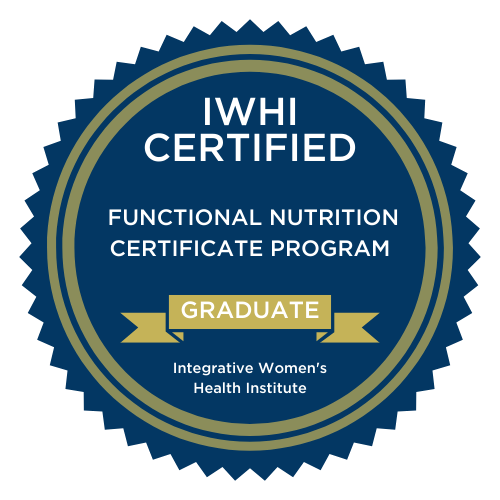
BECOME A FUNCTIONAL NUTRITION EXPERT IN 6 MONTHS!
Fast-track to becoming a specialized expert in functional nutrition for women’s health in under six months.
Gain the confidence you need to address digestive health issues, chronic pain and illness, autoimmune conditions, gut microbiome imbalances, disordered eating, hormonal imbalances, fatigue, and more!
References:
Zheng, Z. S., Simonian, N., Wang, J., & Rosario, E. R. (2024). Transcutaneous vagus nerve stimulation improves Long COVID symptoms in a female cohort: a pilot study. Frontiers in neurology, 15, 1393371. https://doi.org/10.3389/fneur.2024.1393371
Basharat S, Mahood Q; Authors. Vagus Nerve Stimulation for the Treatment of Post–COVID-19 Condition: Health Technology Update [Internet]. Ottawa (ON): Canadian Agency for Drugs and Technologies in Health; 2022 Sep. Available from: https://www.ncbi.nlm.nih.gov/books/NBK603323/
Slankamenac, J., Ranisavljev, M., Todorovic, N., Ostojic, J., Stajer, V., & Ostojic, S. M. (2024). Creatine supplementation combined with breathing exercises reduces respiratory discomfort and improves creatine status in patients with long-COVID. Journal of postgraduate medicine, 70(2), 101–104. https://doi.org/10.4103/jpgm.jpgm_650_23
Espinoza-Bravo, C., Arnal-Gómez, A., Martínez-Arnau, F. M., Núñez-Cortés, R., Hernández-Guillén, D., Flor-Rufino, C., & Cortés-Amador, S. (2023). Effectiveness of Functional or Aerobic Exercise Combined With Breathing Techniques in Telerehabilitation for Patients With Long COVID: A Randomized Controlled Trial. Physical therapy, 103(11), pzad118. https://doi.org/10.1093/ptj/pzad118
Rain, M., Puri, G. D., Bhalla, A., Avti, P., Subramaniam, B., Kaushal, V., Srivastava, V., Mahajan, P., Singh, M., Pandey, N., Malhotra, P., Goel, S., Kumar, K., Sachdeva, N., Maity, K., Verma, P., Dixit, N., Gupta, S. J., Mehra, P., Nadholta, P., … Anand, A. (2022). Effect of breathing intervention in patients with COVID and healthcare workers. Frontiers in public health, 10, 945988. https://doi.org/10.3389/fpubh.2022.945988
Eisen, A. M., Bratman, G. N., & Olvera-Alvarez, H. A. (2024). Susceptibility to stress and nature exposure: Unveiling differential susceptibility to physical environments; a randomized controlled trial. PloS one, 19(4), e0301473. https://doi.org/10.1371/journal.pone.0301473
Ekici, B., Tanındı, A., Ekici, G., & Diker, E. (2016). The effects of the duration of mobile phone use on heart rate variability parameters in healthy subjects. Anatolian journal of cardiology, 16(11), 833–838. https://doi.org/10.14744/AnatolJCardiol.2016.6717
Harris E. Long COVID Linked With Viral Persistence, Serotonin Decline. JAMA. 2023;330(19):1827. doi:10.1001/jama.2023.21170
Kim, J. Y. H., Ragusa, M., Tortosa, F., Torres, A., Gresh, L., Méndez-Rico, J. A., Alvarez-Moreno, C. A., Lisboa, T. C., Valderrama-Beltrán, S. L., Aldighieri, S., & Reveiz, L. (2023). Viral reactivations and co-infections in COVID-19 patients: a systematic review. BMC infectious diseases, 23(1), 259. https://doi.org/10.1186/s12879-023-08117-y
Long, M. B., Howden, A. J. M., Keir, H. R., Rollings, C. M., Giam, Y. H., Pembridge, T., Delgado, L., Abo-Leyah, H., Lloyd, A. F., Sollberger, G., Hull, R., Gilmour, A., Hughes, C., New, B. J. M., Cassidy, D., Shoemark, A., Richardson, H., Lamond, A. I., Cantrell, D. A., Chalmers, J. D., … Brenes, A. J. (2024). Extensive acute and sustained changes to neutrophil proteomes post-SARS-CoV-2 infection. The European respiratory journal, 63(3), 2300787. https://doi.org/10.1183/13993003.00787-2023
Dennis, A., Cuthbertson, D. J., Wootton, D., Crooks, M., Gabbay, M., Eichert, N., Mouchti, S., Pansini, M., Roca-Fernandez, A., Thomaides-Brears, H., Kelly, M., Robson, M., Hishmeh, L., Attree, E., Heightman, M., Banerjee, R., & Banerjee, A. (2023). Multi-organ impairment and long COVID: a 1-year prospective, longitudinal cohort study. Journal of the Royal Society of Medicine, 116(3), 97–112. https://doi.org/10.1177/01410768231154703
https://www.thelancet.com/action/showPdf?pii=S1473-3099%2824%2900171-3
Chen, B., Julg, B., Mohandas, S., Bradfute, S. B., & RECOVER Mechanistic Pathways Task Force (2023). Viral persistence, reactivation, and mechanisms of long COVID. eLife, 12, e86015. https://doi.org/10.7554/eLife.86015
Buonsenso, D., Piazza, M., Boner, A. L., & Bellanti, J. A. (2022). Long COVID: A proposed hypothesis-driven model of viral persistence for the pathophysiology of the syndrome. Allergy and asthma proceedings, 43(3), 187–193. https://doi.org/10.2500/aap.2022.43.220018
Grundler, F., Mesnage, R., Cerrada, A., & Wilhelmi de Toledo, F. (2023). Improvements during long-term fasting in patients with long COVID – a case series and literature review. Frontiers in nutrition, 10, 1195270. https://doi.org/10.3389/fnut.2023.1195270
Haag, L., Richardson, J., Cunningham, Y., Fraser, H., Brosnahan, N., Ibbotson, T., Ormerod, J., White, C., McIntosh, E., O’Donnell, K., Sattar, N., McConnachie, A., Lean, M. E. J., Blane, D. N., & Combet, E. (2023). The remote diet intervention to reduce Long COVID symptoms trial (ReDIRECT): protocol for a randomised controlled trial to determine the effectiveness and cost-effectiveness of a remotely delivered supported weight management programme for people with Long COVID and excess weight, with personalised improvement goals. NIHR open research, 2, 57. https://doi.org/10.3310/nihropenres.13315.2
Gnoni, M., Beas, R., & Vásquez-Garagatti, R. (2021). Is there any role of intermittent fasting in the prevention and improving clinical outcomes of COVID-19?: intersection between inflammation, mTOR pathway, autophagy and calorie restriction. Virusdisease, 32(4), 625–634. https://doi.org/10.1007/s13337-021-00703-5
Hirschberger, S., Strauß, G., Effinger, D., Marstaller, X., Ferstl, A., Müller, M. B., Wu, T., Hübner, M., Rahmel, T., Mascolo, H., Exner, N., Heß, J., Kreth, F. W., Unger, K., & Kreth, S. (2021). Very-low-carbohydrate diet enhances human T-cell immunity through immunometabolic reprogramming. EMBO molecular medicine, 13(8), e14323. https://doi.org/10.15252/emmm.202114323
Percival, S. S., Bukowski, J. F., & Milner, J. (2008). Bioactive food components that enhance gammadelta T cell function may play a role in cancer prevention. The Journal of nutrition, 138(1), 1–4. https://doi.org/10.1093/jn/138.1.1
Singh, D. N., Bohra, J. S., Dubey, T. P., Shivahre, P. R., Singh, R. K., Singh, T., & Jaiswal, D. K. (2023). Common foods for boosting human immunity: A review. Food science & nutrition, 11(11), 6761–6774. https://doi.org/10.1002/fsn3.3628
Zhao, S., Gao, Q., Rong, C., Wang, S., Zhao, Z., Liu, Y., & Xu, J. (2020). Immunomodulatory Effects of Edible and Medicinal Mushrooms and Their Bioactive Immunoregulatory Products. Journal of fungi (Basel, Switzerland), 6(4), 269. https://doi.org/10.3390/jof6040269
Akramiene, D., Kondrotas, A., Didziapetriene, J., & Kevelaitis, E. (2007). Effects of beta-glucans on the immune system. Medicina (Kaunas, Lithuania), 43(8), 597–606.
Baruah, P., Patra, A., Barge, S., Khan, M. R., & Mukherjee, A. K. (2023). Therapeutic Potential of Bioactive Compounds from Edible Mushrooms to Attenuate SARS-CoV-2 Infection and Some Complications of Coronavirus Disease (COVID-19). Journal of fungi (Basel, Switzerland), 9(9), 897. https://doi.org/10.3390/jof9090897
Phillips, J. M., Ooi, S. L., & Pak, S. C. (2022). Health-Promoting Properties of Medicinal Mushrooms and Their Bioactive Compounds for the COVID-19 Era-An Appraisal: Do the Pro-Health Claims Measure Up?. Molecules (Basel, Switzerland), 27(7), 2302. https://doi.org/10.3390/molecules27072302
Arunachalam, K., Sasidharan, S. P., & Yang, X. (2022). A concise review of mushrooms antiviral and immunomodulatory properties that may combat against COVID-19. Food chemistry advances, 1, 100023. https://doi.org/10.1016/j.focha.2022.100023
Wang, S., Li, Z., Ma, Y., Liu, Y., Lin, C. C., Li, S., Zhan, J., & Ho, C. T. (2021). Immunomodulatory Effects of Green Tea Polyphenols. Molecules (Basel, Switzerland), 26(12), 3755. https://doi.org/10.3390/molecules26123755
Barberis, E., Amede, E., Tavecchia, M., Marengo, E., Cittone, M. G., Rizzi, E., Pedrinelli, A. R., Tonello, S., Minisini, R., Pirisi, M., Manfredi, M., & Sainaghi, P. P. (2021). Understanding protection from SARS-CoV-2 using metabolomics. Scientific reports, 11(1), 13796. https://doi.org/10.1038/s41598-021-93260-2
Pedrazini, M. C., da Silva, M. H., & Groppo, F. C. (2022). L-lysine: Its antagonism with L-arginine in controlling viral infection. Narrative literature review. British journal of clinical pharmacology, 88(11), 4708–4723. https://doi.org/10.1111/bcp.15444
Zhang, D., Zhou, Y., Ma, Y., Chen, P., Tang, J., Yang, B., Li, H., Liang, M., Xue, Y., Liu, Y., Zhang, J., & Wang, X. (2023). Gut Microbiota Dysbiosis Correlates With Long COVID-19 at One-Year After Discharge. Journal of Korean medical science, 38(15), e120. https://doi.org/10.3346/jkms.2023.38.e120
Álvarez-Santacruz, C., Tyrkalska, S. D., & Candel, S. (2024). The Microbiota in Long COVID. International journal of molecular sciences, 25(2), 1330. https://doi.org/10.3390/ijms25021330
Scheiman, J., Luber, J.M., Chavkin, T.A. et al. Meta-omics analysis of elite athletes identifies a performance-enhancing microbe that functions via lactate metabolism. Nat Med 25, 1104–1109 (2019). https://doi.org/10.1038/s41591-019-0485-4
Zhang, D., Zhou, Y., Ma, Y., Chen, P., Tang, J., Yang, B., Li, H., Liang, M., Xue, Y., Liu, Y., Zhang, J., & Wang, X. (2023). Gut Microbiota Dysbiosis Correlates With Long COVID-19 at One-Year After Discharge. Journal of Korean medical science, 38(15), e120. https://doi.org/10.3346/jkms.2023.38.e120
Bondareva, M., Budzinski, L., Durek, P., Witkowski, M., Angermair, S., Ninnemann, J., Kreye, J., Letz, P., Ferreira-Gomes, M., Semin, I., Guerra, G. M., Momsen Reincke, S., Sánchez-Sendin, E., Yilmaz, S., Sempert, T., Heinz, G. A., Tizian, C., Raftery, M., Schönrich, G., Matyushkina, D., … Kruglov, A. A. (2023). Cross-regulation of antibody responses against the SARS-CoV-2 Spike protein and commensal microbiota via molecular mimicry. Cell host & microbe, 31(11), 1866–1881.e10. https://doi.org/10.1016/j.chom.2023.10.007
Corsini, A., Bisciotti, A., Canonico, R., Causarano, A., Del Vescovo, R., Gatto, P., Gola, P., Iera, M., Mazzoni, S., Minafra, P., Nanni, G., Pasta, G., Pulcini, I., Salvatori, S., Scorcu, M., Stefanini, L., Tenore, F., Palermi, S., Casasco, M., & Calza, S. (2023). Are Football Players More Prone to Muscle Injury after COVID-19 Infection? The “Italian Injury Study” during the Serie a Championship. International journal of environmental research and public health, 20(6), 5182. https://doi.org/10.3390/ijerph20065182
Rajput, S. S., Aghoram, R., Wadwekar, V., & Nanda, N. (2023). Skeletal muscle injury in COVID infection: Frequency and patterns. Muscle & nerve, 68(6), 873–878. https://doi.org/10.1002/mus.27990
Antar, A. A. R., Yu, T., Demko, Z. O., Hu, C., Tornheim, J. A., Blair, P. W., Thomas, D. L., & Manabe, Y. C. (2023). Long COVID brain fog and muscle pain are associated with longer time to clearance of SARS-CoV-2 RNA from the upper respiratory tract during acute infection. Frontiers in immunology, 14, 1147549. https://doi.org/10.3389/fimmu.2023.1147549
Maffitt, N.J., Germann, M., Baker, A.M.E. et al. Recovery of neurophysiological measures in post-COVID fatigue: a 12-month longitudinal follow-up study. Sci Rep 14, 8874 (2024). https://doi.org/10.1038/s41598-024-59232-y
Montes-Ibarra, M., Oliveira, C. L. P., Orsso, C. E., Landi, F., Marzetti, E., & Prado, C. M. (2022). The Impact of Long COVID-19 on Muscle Health. Clinics in geriatric medicine, 38(3), 545–557. https://doi.org/10.1016/j.cger.2022.03.004
Slankamenac, J., Ranisavljev, M., Todorovic, N., Ostojic, J., Stajer, V., Candow, D. G., Ratgeber, L., Betlehem, J., Acs, P., & Ostojic, S. M. (2024). Eight-Week Creatine-Glucose Supplementation Alleviates Clinical Features of Long COVID. Journal of nutritional science and vitaminology, 70(2), 174–178. https://doi.org/10.3177/jnsv.70.174
Logarbo, B.P., Yang, M., Longo, M.T., Kingry, C. and Courseault, J. (2024), Long COVID and the diagnosis of underlying hypermobile Ehlers-Danlos syndrome and hypermobility spectrum disorders. PM&R: The Journal of Injury, Function and Rehabilitation. https://doi.org/10.1002/pmrj.13120
Gavrilova, N., Soprun, L., Lukashenko, M., Ryabkova, V., Fedotkina, T. V., Churilov, L. P., & Shoenfeld, Y. (2022). New Clinical Phenotype of the Post-Covid Syndrome: Fibromyalgia and Joint Hypermobility Condition. Pathophysiology : the official journal of the International Society for Pathophysiology, 29(1), 24–29. https://doi.org/10.3390/pathophysiology29010003
VanElzakker, M. B., Bues, H. F., Brusaferri, L., Kim, M., Saadi, D., Ratai, E. M., Dougherty, D. D., & Loggia, M. L. (2023). Neuroinflammation in post-acute sequelae of COVID-19 (PASC) as assessed by [11C]PBR28 PET correlates with vascular disease measures. bioRxiv : the preprint server for biology, 2023.10.19.563117. https://doi.org/10.1101/2023.10.19.563117
Kavanagh E. (2022). Long Covid brain fog: a neuroinflammation phenomenon?. Oxford open immunology, 3(1), iqac007. https://doi.org/10.1093/oxfimm/iqac007
Braga, J., Lepra, M., Kish, S. J., Rusjan, P. M., Nasser, Z., Verhoeff, N., Vasdev, N., Bagby, M., Boileau, I., Husain, M. I., Kolla, N., Garcia, A., Chao, T., Mizrahi, R., Faiz, K., Vieira, E. L., & Meyer, J. H. (2023). Neuroinflammation After COVID-19 With Persistent Depressive and Cognitive Symptoms. JAMA psychiatry, 80(8), 787–795. https://doi.org/10.1001/jamapsychiatry.2023.1321
Falco, P., Litewczuk, D., Di Stefano, G., Galosi, E., Leone, C., De Stefano, G., Di Pietro, G., Tramontana, L., Ciardi, M. R., Pasculli, P., Zingaropoli, M. A., Arendt-Nielsen, L., & Truini, A. (2024). Small fibre neuropathy frequently underlies the painful long-COVID syndrome. Pain, 10.1097/j.pain.0000000000003259. Advance online publication. https://doi.org/10.1097/j.pain.0000000000003259
Menezes, D. C., Lima, P. D. L., Lima, I. C., Uesugi, J. H. E., Vasconcelos, P. F. D. C., Quaresma, J. A. S., & Falcão, L. F. M. (2023). Metabolic Profile of Patients with Long COVID: A Cross-Sectional Study. Nutrients, 15(5), 1197. https://doi.org/10.3390/nu15051197
Wise J. (2023). Covid-19: Metformin reduces the risk of developing long term symptoms by 40%, study finds. BMJ (Clinical research ed.), 381, 1306. https://doi.org/10.1136/bmj.p1306
MCCarthy M. W. (2023). Metformin as a potential treatment for COVID-19. Expert opinion on pharmacotherapy, 24(10), 1199–1203. https://doi.org/10.1080/14656566.2023.2215385
Hadanny, A., Zilberman-Itskovich, S., Catalogna, M., Elman-Shina, K., Lang, E., Finci, S., Polak, N., Shorer, R., Parag, Y., & Efrati, S. (2024). Long term outcomes of hyperbaric oxygen therapy in post covid condition: longitudinal follow-up of a randomized controlled trial. Scientific reports, 14(1), 3604. https://doi.org/10.1038/s41598-024-53091-3

Dr. Jessica Drummond
Founder & CEO
The Integrative Women’s Health Institute
At the Integrative Women’s Health Institute, we’ve dedicated 17 years to crafting evidence-driven, cutting-edge programs that empower practitioners like you to address the complexities of women’s health.
Dr. Jessica Drummond’s unique approach focuses on nervous system dysregulation, trauma, and mindset – essential elements often overlooked in traditional health education.
In addition, your training will be fully evidence based, personalized, and nuanced (this is not a cookie cutter approach) in functional nutrition, exercise, recovery, cellular health, and all other lifestyle medicine tools.
You’ll learn to support your clients with cutting edge tools safely and effectively.
Read Related Posts from The Integrative Women's Health Institute Blog:
Download The WHC Program Guide!
Enter your information to download your copy The Women’s Health Coach Certification Program guide.
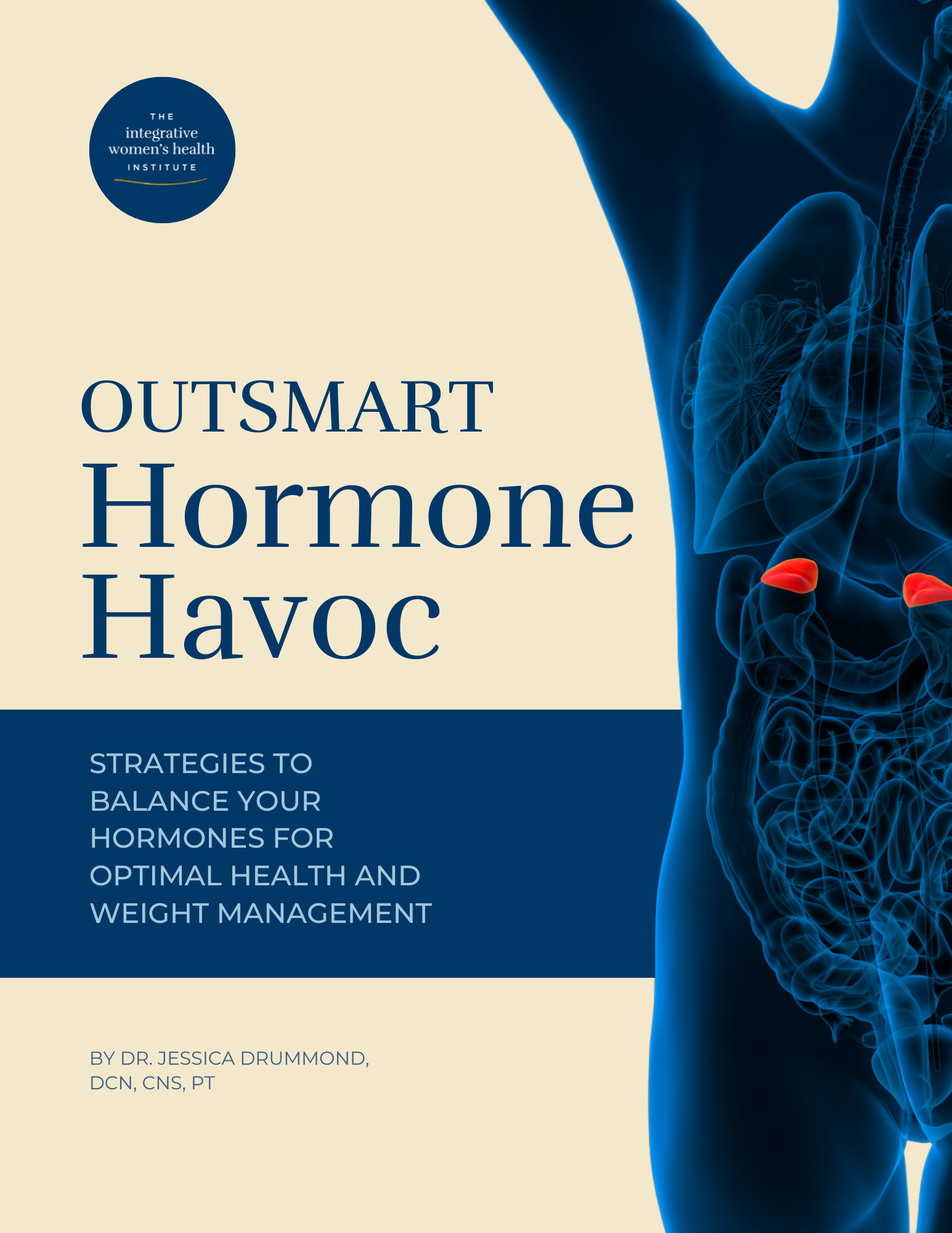
Download your free copy of the Outsmart Hormone Havoc eBook!

